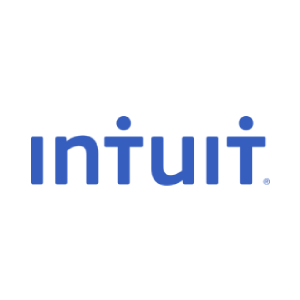
“Once again Saltmarch has knocked it out of the park with interesting speakers, engaging content and challenging ideas. No jetlag fog at all, which counts for how interesting the whole thing was."
Cybersecurity Lead, PwC

In the 1850s, Australia was gripped by gold fever. Prospectors flocked to the land down under, shovels and picks in hand, all chasing the glimmer of fortune. Fast forward to today, and we're on the cusp of another Eureka moment. But this time, it's not nuggets of gold that promise untold riches; it's lines of code and algorithms. Australia is at a pivotal juncture, teetering on the edge of a technological revolution that could redefine its economic landscape. A recent report by Microsoft and the Tech Council of Australia has crunched the numbers, and they're nothing short of impressive. Just like the gold rush transformed Australia into a prosperous nation, this new wave of Generative AI has the potential to redefine our economic landscape in ways we can't yet fully grasp. So, grab your digital picks and shovels; we're going prospecting in the data mines. And just as the gold rush had its hotspots—regions rich in gold deposits—today's AI revolution has its own fertile grounds ready for exploration.
The healthcare sector alone could see an injection of $5-13 billion, revolutionizing a system often hamstrung by outdated methods. But let's not get tunnel vision; the report's findings extend far beyond healthcare. Manufacturing could experience a $2-5 billion boost, and retail could rake in an additional $3-9 billion. Even the professional and financial services sectors are looking at a potential windfall of $5-13 billion. The report isn't just a numbers game; it's a deep dive into the transformative potential of Generative AI (GAI) across sectors.
Let's zero in on healthcare. Just as the original gold rush led to innovations in mining techniques, Generative AI is poised to revolutionize healthcare. The report hints at GAI's ability to cut through red tape, but let's push the envelope. Imagine GAI algorithms as the new prospectors, sifting through petabytes of patient data to identify patterns that could predict medical outcomes. Why even stop at administrative efficiency? Imagine machine learning models trained on vast datasets, capable of predicting the likelihood of readmission for heart failure patients or the efficacy of specific drug regimens for individuals with complex medical histories. These are actionable insights that could be seamlessly integrated into electronic health records, arming clinicians with real-time data to make more informed decisions.
In the 1850s, the Motherlode was the richest vein of gold, sought after by every prospector. Today, manufacturing could be the AI Motherlode, a sector ripe for automation and efficiency. The report gives us a glimpse into how Generative AI (GAI) could revolutionize manufacturing, but let's not limit our imagination to the report's scope. Sure, GAI could automate managerial tasks, but what if it could also serve as the nerve center for an entire manufacturing operation? Imagine GAI algorithms that not only manage inventory but also monitor machinery in real-time to predict when maintenance is due or when a part is likely to fail. And let's not forget about product design. GAI could be the ultimate collaborator, working alongside human designers to iterate prototypes at a pace that's currently unimaginable. Think generative design algorithms that run through thousands of design permutations overnight to arrive at an optimized product that balances cost, material use, and functionality.
Boomtowns sprang up overnight during the gold rush, driven by the influx of prospectors and merchants. Similarly, the retail sector could experience a boom like never before. The report highlights the potential for enhanced customer experiences through GAI-driven automation and personalization. But let's take it up a notch. What if GAI could dynamically adjust pricing based on real-time market trends, inventory levels, and even individual customer behavior? Imagine walking into a store where the price of a product drops just because you looked at it twice, thanks to GAI algorithms that predict your purchasing intent, creating a personalized shopping experience that's as dynamic as a gold rush marketplace. This isn't just about making customers happy; it's about leveraging data to maximize profits while delivering a hyper-personalized shopping experience.
While the Microsoft-Tech Council report serves as a siren call for the transformative potential of Generative AI (GAI), it doesn't shy away from laying out the hurdles ahead.
Let's dissect one of the most pressing challenges: the need for a skilled workforce and substantial investment. The gold rush wasn't just about finding gold; it was about the people who made it happen. Similarly, the AI revolution needs a skilled workforce. As of February 2023, Australia's tech workforce is already a force to be reckoned with, numbering 935,000 strong and projected to balloon to 1.2 million by 2030. But these numbers alone won't cut it when it comes to the specialized skill sets required for GAI implementation. So, how do we bridge this skill gap? The report suggests investment, but let's get more granular. Public-private partnerships could be the solution here. Imagine the tech giants collaborating with educational institutions to develop GAI-specific curricula. We're not just talking about a semester-long course; think comprehensive training programs that equip the workforce with the skills needed to develop, implement, and manage GAI systems. This could be a win-win, providing companies with a skilled labor pool while giving employees a leg up in a competitive job market. But why stop at education? These partnerships could extend to research and development, pooling resources to create GAI innovation hubs that serve as testing grounds for new algorithms and applications.
Claim jumping was a significant concern during the gold rush, where prospectors would illegally take over others' claims. As the report highlights, the equivalent concern in the GAI space is data integrity and safety. Let's talk solutions. Blockchain technology isn't just a buzzword here; it could be a game-changing solution to ensure data integrity and confidentiality in GAI applications. What if blockchain technology was integrated with zero-knowledge proofs, cryptographic techniques that allow one party to prove to another that they possess a specific piece of information, without revealing the information itself? In healthcare, this could mean that a GAI algorithm could verify the authenticity of patient data without ever actually "seeing" the sensitive information.
During the gold rush, town hall meetings were a way for communities to come together and establish trust. In the age of AI, winning public trust is just as crucial. The report highlights a sobering statistic: only a third of Australians currently trust AI. While the report suggests education as a solution, let's get more specific. A national campaign isn't just a nice-to-have; it's a necessity. But this shouldn't be a run-of-the-mill PSA. Think interactive platforms, perhaps even leveraging GAI itself, to educate the public on AI's capabilities and limitations. Virtual town halls, AI demos, and even gamified learning experiences could be part of this initiative. The goal isn't just to inform but to engage, turning public opinion not just through facts but through firsthand experience. So, while the report does a commendable job of flagging the challenges of safety, confidentiality, and trust, the path to overcoming these hurdles may require us to venture into uncharted territory.
Just as standards were established to weigh and value gold, we need a gold standard for AI regulation. The report acknowledges Australia's existing regulatory framework for AI, citing agencies like CSIRO's National AI Centre and initiatives like the Responsible AI Network (RAIN). But let's be real: laying the groundwork is one thing; building a skyscraper is another. So, how do we get there? Enter the concept of a sector-specific regulatory sandbox, where companies can test GAI applications under real-world conditions but within a temporarily relaxed regulatory framework. Think of it as a "safe space" for innovation, where the usual red tape is replaced by a streamlined set of guidelines designed to foster, not hinder, technological advancement. But let's not stop at the concept; let's talk execution. These sandboxes could be jointly managed by regulatory agencies and industry stakeholders, ensuring a balanced approach that considers both public interest and technological feasibility.
And, these could be tailored to specific sectors like healthcare, manufacturing, and retail, each with its own set of guidelines and evaluation metrics. And here's a twist: what if these sandboxes also served as data collection points for future regulatory frameworks? Every test, every failure, every success could feed into a dynamic regulatory model that evolves in real-time, adapting to the rapid pace of technological advancement. So, while the report rightly points out the need for a more comprehensive policy approach, the solution may lie in reimagining what regulation looks like in the age of GAI.
So, here we are, at a make-or-break moment, as underscored by the Microsoft-Tech Council report. Australia has both the resources and the ambition to ride the GAI wave, but the clock is ticking. So, what's at stake? It's not just about riding the GAI wave; it's about steering it. Australia has the potential to not just adopt GAI but to become a global leader in shaping its future applications and ethical frameworks. But to do that, it needs to act decisively and act now. We're not just talking about policy adjustments or incremental investment; we're talking about a full-throttle commitment to GAI, from public-private partnerships to regulatory innovation.
The choices made today won't just impact the next quarterly report; they'll set the trajectory for Australia's role in the GAI landscape for decades to come. And given the staggering financial projections—billions in potential revenue across healthcare, manufacturing, retail, and professional services—the economic incentives align perfectly with the strategic imperatives.
The gold rush was a finite period; those who hesitated missed out on a fortune. Similarly, the AI gold rush won't wait. Australia has the tools, the talent, and the data to make an indelible mark on the GAI world stage. But to do that, it needs to move, and it needs to move now. The data has spoken.
Have questions or comments about this article? Reach out to us here.

“Once again Saltmarch has knocked it out of the park with interesting speakers, engaging content and challenging ideas. No jetlag fog at all, which counts for how interesting the whole thing was."
Cybersecurity Lead, PwC

“Very much looking forward to next year. I will be keeping my eye out for the date so I can make sure I lock it in my calendar."
Software Engineering Specialist, Intuit

“Best conference I have ever been to with lots of insights and information on next generation technologies and those that are the need of the hour."
Software Architect, GroupOn

“Happy to meet everyone who came from near and far. Glad to know you've discovered some great lessons here, and glad you joined us for all the discoveries great and small."
Web Architect & Principal Engineer, Scott Davis

“Wonderful set of conferences, well organized, fantastic speakers, and an amazingly interactive set of audience. Thanks for having me at the events!"
Founder of Agile Developer Inc., Dr. Venkat Subramaniam

“What a buzz! The events have been instrumental in bringing the whole software community together. There has been something for everyone from developers to architects to business to vendors. Thanks everyone!"
Voltaire Yap, Global Events Manager, Oracle Corp.